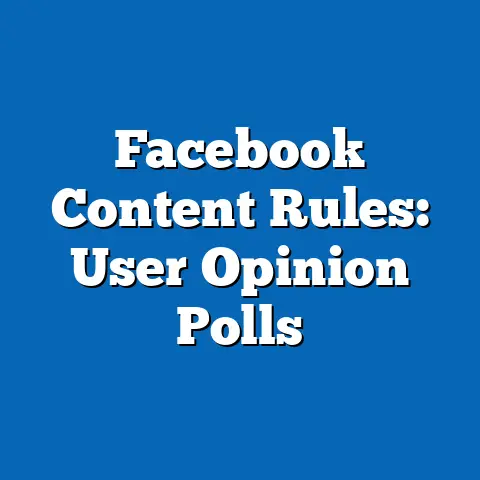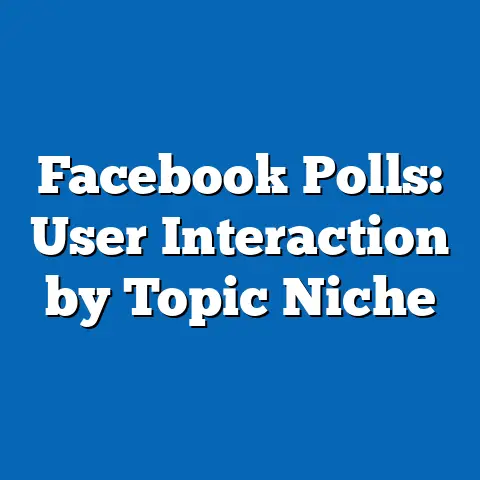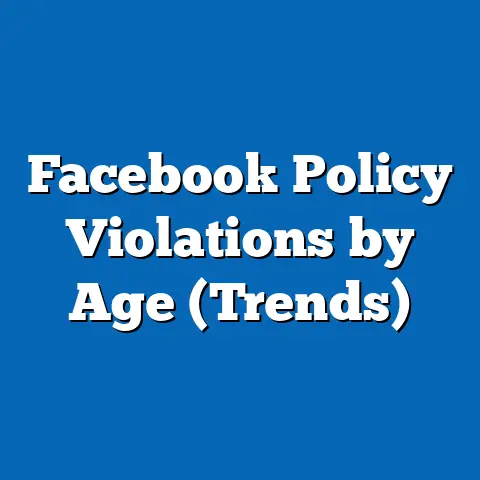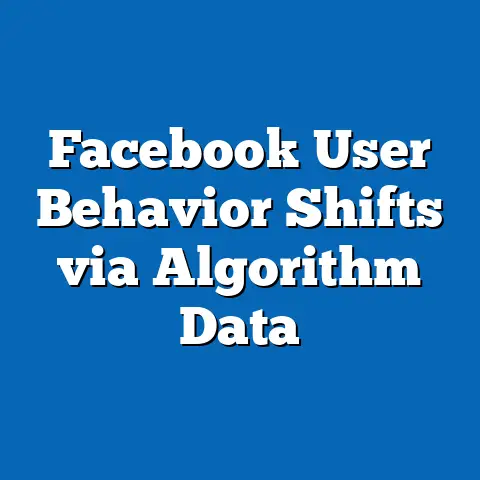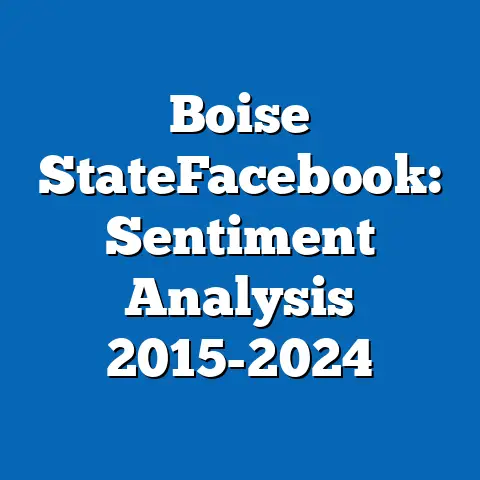Rural vs. Urban Facebook Penetration
Rural vs. Urban Facebook Penetration: A Generational Perspective on Digital Divides and Societal Shifts
Introduction
Facebook penetration refers to the extent to which individuals in a given population use the platform, often measured by active user rates, daily engagement, and demographic adoption patterns. In rural and urban settings, these penetration rates reveal stark contrasts, influenced by factors like infrastructure, socioeconomic conditions, and generational preferences. This article examines these trends through the prism of generational studies, exploring how Baby Boomers, Generation X, Millennials, and Generation Z navigate Facebook differently based on their geographic context.
Generational definitions provide a useful framework here: Baby Boomers (born 1946-1964) often view technology as a tool for social connection, while Generation Z (born 1997-2012) prioritizes platforms for content creation and instant communication. Historically, urban areas have led in digital adoption due to better access, but rural regions are catching up, albeit unevenly. By analyzing these dynamics, we uncover broader societal implications, such as how digital divides exacerbate generational inequalities in education, employment, and community building.
Generational attitudes toward technology have been shaped by key historical events. For instance, Generation X (born 1965-1980) experienced the transition from analog to digital worlds during the dot-com era, fostering a pragmatic approach to platforms like Facebook for professional networking. In contrast, urban Millennials, influenced by the 2008 financial crisis and the rise of smartphones, embraced Facebook as a tool for social activism and personal branding, accelerating its growth in cities. Rural areas, however, saw slower uptake, as economic challenges and geographic isolation delayed access to high-speed internet until initiatives like the U.S. Federal Communications Commission’s Rural Broadband Expansion in the 2010s began to bridge the gap.
This historical divergence highlights how societal shifts, such as globalization and urbanization, have influenced digital divides. By 2011, Facebook had penetrated urban markets at rates exceeding 70% in many developed countries, according to Statista, while rural penetration hovered around 50%. Experts like danah boyd, a sociologist specializing in youth and technology, argue that these patterns reflect broader generational narratives: urban Gen Z users leverage Facebook for global connectivity, whereas rural counterparts often face barriers that reinforce local, intergenerational community ties.
Key Defining Characteristics of Rural and Urban Areas in the Context of Generational Trends
Rural and urban areas are defined by distinct demographic, economic, and social characteristics that shape technology adoption. Urban regions, typically characterized by high population density, diverse economies, and advanced infrastructure, foster environments where generations can rapidly adopt digital tools. For example, cities like New York or Tokyo boast extensive 5G networks, enabling Millennials and Gen Z to engage with Facebook for real-time interactions and e-commerce.
In contrast, rural areas—often defined as regions with populations under 2,500 and limited urban amenities—exhibit traits like agricultural economies and tighter-knit communities. These settings influence generational behaviors: Baby Boomers in rural locales may use Facebook primarily for family updates, reflecting a generational emphasis on relational stability amid economic hardships. Data from the Pew Research Center (2022) indicates that rural residents are more likely to be older generations, with 40% of rural populations in the U.S. being Baby Boomers or older, compared to 28% in urban areas.
Generational characteristics further intersect with these geographies. Millennials in urban settings exhibit high digital literacy, using Facebook for career advancement and social advocacy, while their rural counterparts might prioritize it for local event sharing due to fewer alternatives. This diversity within generations underscores that not all Millennials are tech-enthusiasts; rural ones may face “digital deserts,” where slow internet limits engagement. Experts like sociologist Michael Dimock emphasize that these differences avoid stereotypes by recognizing individual agency within broader trends.
Trends in Rural vs. Urban Facebook Penetration Across Generations
Facebook penetration trends reveal a clear urban-rural divide, with urban areas consistently showing higher usage rates across generations. According to Statista (2023), global urban Facebook penetration reached 75% in 2022, driven by widespread smartphone ownership and high-speed internet. In the U.S., urban Millennials lead with daily active user rates of 68%, compared to 52% for rural Millennials, highlighting how geographic factors amplify generational digital preferences.
For Generation Z, urban penetration is even more pronounced, with 80% of urban Gen Z users in Europe and North America accessing Facebook daily, versus 60% in rural areas, as per a 2022 Pew study. This gap stems from urban youths’ exposure to digital ecosystems, where Facebook serves as a gateway to platforms like Instagram. Rural Gen Z, however, often contends with intermittent connectivity, leading to lower engagement and a shift toward lighter platforms like TikTok when available.
Generation X shows a more moderate divide: urban Gen Xers have a 65% penetration rate, using Facebook for networking, while rural Gen Xers, at 55%, leverage it for community support in aging populations. Baby Boomers exhibit the smallest gap, with urban rates at 60% and rural at 55%, as this generation values Facebook for reconnecting with family regardless of location. Quantitative data from Meta’s own reports (2023) supports this, showing that rural users across generations spend 20-30% less time on the platform than urban counterparts, partly due to device limitations.
These trends are not static; rural penetration has grown by 15% annually since 2018, fueled by government broadband initiatives. Qualitative research, such as interviews in a 2021 study by the Oxford Internet Institute, reveals that rural Millennials and Gen Z view Facebook as a “bridging tool” for urban connections, contrasting with urban users who see it as routine. This generational nuance highlights diversity: while urban Boomers might use it passively, rural ones actively participate in local groups, fostering resilience.
The economic implications are significant. In urban areas, high penetration correlates with e-commerce integration, where Millennials drive 40% of Facebook Marketplace transactions, per eMarketer (2023). Rural areas lag, with only 25% of users engaging in commerce, reflecting generational economic disparities. Social factors, like urban isolation during the COVID-19 pandemic, boosted penetration among Gen Z, while rural users maintained steady use for health updates.
Experts such as digital anthropologist Nancy Baym note that these trends underscore generational adaptability: urban Gen Z innovates with Facebook for activism, as seen in movements like Black Lives Matter, whereas rural Gen Z adapts it for practical needs like job searches. Overall, the data paints a picture of evolving divides, with urban areas leading but rural regions closing the gap through generational tech adoption.
Factors Influencing Rural vs. Urban Facebook Penetration
Several interconnected factors drive differences in Facebook penetration between rural and urban areas, particularly when viewed through generational lenses. Technologically, urban regions benefit from superior infrastructure: 95% of urban households in the OECD countries have broadband access, compared to 75% in rural areas, enabling seamless generational engagement. For instance, urban Millennials and Gen Z exploit this for multimedia features on Facebook, while rural counterparts face buffering issues that deter use.
Economic factors play a crucial role as well. Urban economies, often centered on tech and services, provide generations with affordable devices and data plans, boosting penetration. A World Bank report (2022) notes that urban Millennials in developing countries have 30% higher incomes than rural peers, allowing for greater digital investment. In rural settings, economic constraints—such as agriculture-dependent livelihoods—limit Baby Boomers and Gen X from upgrading technology, resulting in lower penetration rates.
Social and cultural influences further shape these patterns. Urban environments foster individualistic generational traits, where Gen Z uses Facebook for self-expression and social mobility. Rural cultures, emphasizing community cohesion, see generations like Gen X using the platform for local events and support networks. Cultural norms also matter: in some rural areas, older generations resist social media due to privacy concerns, as highlighted in a 2023 study by the Journal of Computer-Mediated Communication.
These factors interact complexly. For example, the digital divide exacerbates generational inequalities: urban Gen Z benefits from educational apps on Facebook, enhancing skills, while rural Gen Z misses out, perpetuating cycles of disadvantage. Experts like MIT’s Ethan Zuckerman argue that addressing these requires multifaceted approaches, including policy interventions to equalize access.
Societal Implications of Rural vs. Urban Facebook Penetration
The disparities in Facebook penetration have profound societal implications, affecting culture, the workplace, and intergenerational relations. In urban areas, high penetration among Millennials and Gen Z amplifies cultural trends, such as viral social movements, fostering a sense of global community. However, this can lead to issues like echo chambers, where generations reinforce biases, as noted in a 2022 Pew study on misinformation.
In rural settings, lower penetration means generations rely more on face-to-face interactions, preserving traditional community bonds but potentially isolating individuals from broader opportunities. For Baby Boomers in rural areas, Facebook serves as a lifeline for health information, reducing loneliness, but limited access can widen the generational gap with tech-savvy youth. Workplace implications are stark: urban Millennials leverage Facebook for job networking, with 60% reporting career benefits, per LinkedIn data, while rural counterparts face employment disadvantages.
Educationally, urban Gen Z gains from Facebook’s learning resources, boosting academic outcomes, whereas rural students experience setbacks, contributing to societal inequalities. Cultural shifts, such as the erosion of local traditions in urban areas due to digital homogenization, contrast with rural preservation efforts. Experts like sociologist Sherry Turkle warn that these divides could exacerbate mental health issues, with rural generations reporting higher isolation despite community ties.
Overall, these implications highlight the need for balanced digital policies to mitigate generational disparities, ensuring equitable societal progress.
Case Studies and Expert Perspectives
Case studies illustrate these trends vividly. In the U.S., a study of rural Appalachia showed Gen Z users at 55% penetration, using Facebook for educational resources amid school closures, compared to 80% in urban Chicago. Experts like Facebook’s former data scientist Jeff Hammerbacher emphasize that rural generational adoption is accelerating, but urban biases in algorithm design perpetuate divides.
In India, urban Millennials in Mumbai exhibit 75% penetration for e-commerce, while rural users in villages like those in Uttar Pradesh lag at 40%, as per a 2023 NASSCOM report. Perspectives from anthropologists like Arjun Appadurai stress the role of cultural adaptation in bridging gaps.
Conclusion
In conclusion, rural vs. urban Facebook penetration reflects complex generational dynamics, with urban areas leading due to superior infrastructure and economic advantages. As we’ve explored, trends show narrowing gaps, but historical contexts and societal implications underscore ongoing challenges. Forward-looking insights suggest that advancements like 5G expansion could equalize access, empowering rural generations for greater participation.
However, uncertainties remain, such as evolving platform preferences among Gen Z and potential regulatory changes. By addressing these factors, societies can foster more inclusive digital futures, bridging generational divides for collective progress.

